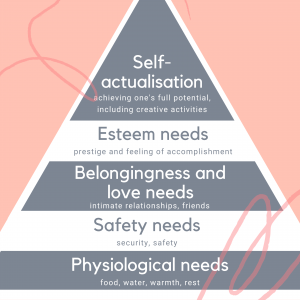Things have changed hugely in New Zealand over the last few months, both personally and professionally for everyone, and as Stephen Hawking said, “Intelligence is the ability to adapt to change.” However, before anyone can adapt to the change it must first be understood and accepted. From here a realistic goal can be set on how the future will look after this change.
New Zealand is at risk of a gap forming as people are separating into groups, people on different sides of the same story of change; people who are back at work (on site), people who are still working from home (WFH), those who are still unable to do either but have a job (in lieu), and those who have been made redundant (out of the job). What action can your people, your place, and your brand take to close the gap, or better yet, prevent the gap.
The logistics: How are you preparing?
What is the best outcome for each of these people and are they all receiving the same attention and fed the information they need on time? On site workers have been pushed back out into the world and asked to expand their bubbles with little warning due to the fast moving nature of the changes in alert levels. At the bare minimum, they have instructions from the government on correct social distances and safety procedures for being back at work and for the more prepared, induction courses are being completed before reentering the site, whether it’s an office building or construction site.
For some in this situation another large change like this can be a blow to their resilience as their circumstances are changed again. It’s an important time to clarify their rights and also their commitment to the job. It can also be very beneficial to increase support to these people who may have fears for their safety about coming back to work.
For those still WFH very little has changed except now they can order a takeaway lunch and get a coffee. By now most will be in a routine, but it could be time to provide more guidelines as to how WFH should be done. Are health and safety guidelines still being met in people’s new offices? How is their workstation setup, are they taking proactive measures to protect themselves physically by using ergonomic guidelines or are they working from the couch? What steps have been taken to encourage their continued wellbeing? We must have an open dialogue on WFH tips and why they should be followed. There is science behind the top three tips on setting WFH boundaries:
- Having a designated area in the home for work
- Getting into work clothing
- Keeping a routine
Much like how The Division of Sleep Medicine at Harvard says, “Keeping computers, TVs, and work materials out of the room will strengthen the mental association between your bedroom and sleep.” So does creating strong boundaries for WFH. Encourage an increase in efficiency and productivity by taking the time to educate your people on better work boundaries for WFH. You should also emphasise that normal work hours should be adhered to so that family life may continue. Keep the routine of leaving work (designated area in the home) and going home to the family/taking downtime. This keeps a nice work home balance which will improve staff wellbeing.
It’s also wonderful to consider if WFH could become a permanent option. There are many benefits to this, such as:
- Flexibility
- Money saving: office space, travel costs
- Better lifestyle: more time with family and friends
Those with a job in lieu could be enjoying the long downtime and increased relationships built whilst in lockdown at home. This could all be tinged with fear of the possibility that their job is in lieu. Have they been kept in touch with? What clarity have you provided? In a time where nothing is certain it is paramount to keep the conversation going. This can ease the pressures of the unknown about their job if it is known what steps are being taken to minimise the risk of losing their job. This could be as simple as setting a task to upskill or having an induction program they can complete from home. This will prepare them to hit the ground running when they can eventually return on site.
Collectively as a nation, I believe we are aching for people out of the job and together as a country we can help them through. We can do this by providing a boost to their resilience through keeping a support network running for those in need. The government has alleviated some money pains and as a nation we have eased some worries by encouraging local business and products, as seen on the New Zealand Made Products page, and we can continue to support by keeping an open ear to those around us.
The Wellbeing: How are you monitoring it?
As a company how are you keeping clarity with staff and assisting them with not only physical wellbeing but also mental wellbeing? No matter where your staff are in this journey it is important to remember the key phrase BE KIND and apply it everywhere. This change that has hit New Zealand has had a different effect on all people. As a person leading others, more frequent updates to staff and taking each change as a new mentoring opportunity is the best way to keep contact. Taking the time to do a feelings thermometer check is a simple but effective way to monitor your team and provide support to those who need it.

“One can choose to go back toward safety or forward toward growth. Growth must be chosen again and again; fear must be overcome again and again.” —Abraham Maslow. Here at Skillpod we believe in the power of connection and our mission is to help people grow through online training, anywhere. From Working with Remote Teams Module for improving WFH people – to Induction modules for reintroducing staff before getting them on site – to Resilience for all people to understand how they process change and adapt to it.
